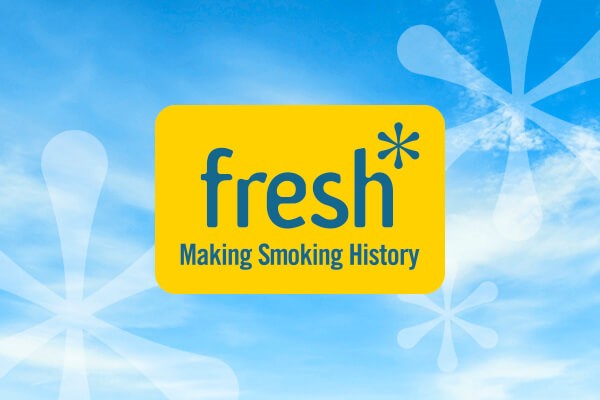Tobacco Industry Illicit Trade Claims Shown to be Wrong, Again
Official figures released today show that the level of tobacco smuggling in the UK in 2012/13 was no higher than in 2010/11, the last published set of figures. [1]
According to HM Revenue & Customs, in 2012/13 an estimated 9% of cigarettes consumed in the UK were illicit compared to 9% in 2010/11 and 7% in 2011/12. The figures for hand rolled tobacco were 36% in 2012/13 compared to 38% in 2010/11 and 35% in 2011/12 (all figures mid-range estimates). Meanwhile, tobacco tax revenues have also continued to rise. [2] The tobacco industry and its front groups regularly publish information claiming to show that illicit trade is rising rapidly: these claims have yet again been shown to be false [3].
The industry has also been claiming that standardised packaging could increase illicit trade, although all the key security features on current packaging would also be on standardised packs. [4]
However, as the House of Commons Public Accounts Committee reported yesterday [5], HMRC could still do more to cut illicit trade even further. There were only 265 prosecutions for tobacco smuggling in 2012-13 and prosecutions for organised crime actually fell. The PAC reported that “HMRC has not yet found the right balance in its enforcement action, which can range from prosecutions of organised criminal gangs to imposing fines or referring offenders to licensing authorities for those involved in local, small-scale operations”.
HMRC spending on illicit trade enforcement fell from £68.9 million in 2012/12 to £67.4 million in 2012-13, despite the fact that public spending on tackling the illicit tobacco trade shows a return on investment of about 10 to 1. [6] ASH is also calling on the Government to ratify and implement the World Health Organisation’s Illicit Trade Protocol, which was negotiated last year. [7]
Ailsa Rutter, Director of Fresh, said: “Although illegal tobacco is still a problem in some areas, we have seen a real fall in the overall market in the North East and nationally over the last decade.
“Tightening up the supply of illegal tobacco at EU level has had a major impact, but also at local level, campaigns and awareness about the problems illegal tobacco causes means that fewer people now see illegal tobacco as a victimless crime.
“However, as the House of Commons Public Accounts Committee reported this week, more needs to be done to stop tobacco companies oversupplying some European markets, with the tobacco findings its way to the UK as illegal product.
“Clearly moving forward the most effective ways to reduce illegal tobacco will be to tighten up cross border supply further and encourage more smokers to quit.”
Commenting, Deborah Arnott, Chief Executive of ASH said:
“Once again, official figures show that the illicit tobacco trade in the UK is not rising rapidly, as the tobacco industry and its front groups routinely claim. The industry’s latest myth is that standardised packaging of cigarette products could increase illicit trade: this is as false as every other claim it makes on the issue.
But there is no room for complacency. As the Public Accounts Committee reported only yesterday, spending on action against illicit trade actually fell last year. This is likely to cost the Government money in the long run, and is certainly not a cost effective way to cut public spending.
Tobacco smuggling can be fought while we also cut smoking rates. That is the bottom line that the tobacco industry is so desperate to obscure.”
Notes:
The illicit tobacco trade rose from below 5% in the early 1990s to 20% in 2000 (mid-range estimates), in large part due to tobacco companies’ facilitating the smuggling of their own products. Around 80% of smuggled tobacco entering the UK in the 1990s was manufactured in the UK, exported and diverted to the black market, then smuggled back into the UK. In 2000, the UK Government introduced an anti-smuggling strategy and strengthened it in 2006, 2008, and 2011. Between 2004 and 2010, the European Union also concluded legally-binding agreements with the four biggest tobacco manufacturers, imposing large financial penalties if their own products were found to have been diverted into illicit channels.
[1] Measuring Tax Gaps 2012. HMRC
[2] Tobacco tax revenues
Financial Year Tobacco Tax Revenue – £million
2005/06 7,959
2006/07 8,149
2007/08 8,094
2008/09 8,219
2009/10 8,813
2010/11 9,144
2011/12 9,551
2012/13 9,681
Source: HMRC Tobacco Bulletins
[3] See for example the latest KPMG Project Star Report commissioned by Philip Morris International
[4] The key security features on existing packaging that would also be present on standardised packaging are:
• a covert mark on each licit pack, which can be read by enforcement authorities using a simple scanner to determine whether or not a pack is counterfeit
• other security marks that vary between manufacturers, for example the configuration of marks on filter paper
• number codes printed on each pack, which will be developed and standardised through the introduction of the tracking and tracing system mandated under Article 8 of the Illicit Trade Protocol
Under a standardised packaging law, the Secretary of State would retain the power to include any features in pack design which the Government considers desirable as a protection against illicit trade.
[4] Public Accounts Committee – Twenty-Third Report HM Revenue and Customs: Progress in tackling tobacco smuggling
[5] Johnson P. “Cost Benefit Analysis of the FCTC Protocol on Illicit Trade in Tobacco Products”. http://www.ash.org.uk/files/documents/ASH_709.pdf
[6] http://www.who.int/fctc/protocol/about/en/
